Worms in the aquarium - who is good, who is evil?
Table of contents
Worms belong to many different animal species, they are not an own taxonomic animal class! That's why there are many different worms, and you have to take a closer look, which worm you have in front of you in the aquarium. Typically we perceive a worm as an animal, which has no legs and is clearly longer than wide.
Among the worms in the aquarium there are those that live predatorily, there are the parasitic worms and the useful cleaners that take care of leftovers and clean the aquarium. Therefore, before you panic and boil the aquarium, it is important to take a close look at which worm you are dealing with. Panic is a very bad advisor, therefore - please take a deep breath, get a magnifying glass ready and look carefully!
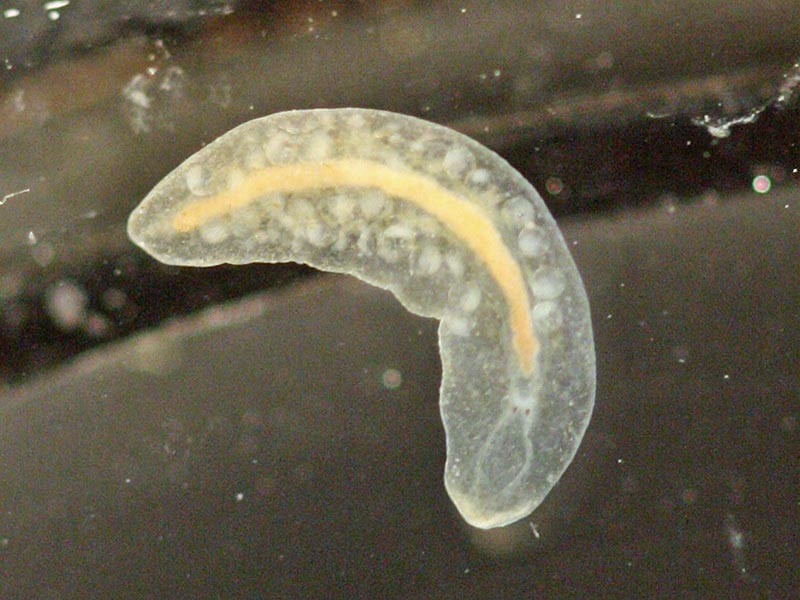
Disc worms
Let's start with the rather harmless candidates, which are often mistaken for predatory planarians: the white and the reddish disc worms.
Like planarians, these rather flat worms belong to the group of predatory turbellarians or flatworms, but their smaller size makes them harmless for shrimps and larger snails. From time to time a freshly hatched post horn snail or bubble snail might be sucked out, but the disc worms are not really dangerous. Besides worms and microorganisms they also like to eat leftover food.
Most disc worms belong to the Rhabdocoela or Maricola, which is a different class of animals than planarians (their class is called Seriata).
Like planarians, disc worms glide along, a bit like a snail. Like planarians, they also cannot swim. If they feel threatened or disturbed, disc worms contract into a small spherical blob.
Fish, crayfish and now and then also shrimps like to eat a disc worm. These flatworms seem to taste quite good. In fish aquariums they tend to be rarely seen, because they hide well there.
We have a detailed article on disc worms in the blog: "Disc Worms / Rhabdocoela". Here you will find detailed info from identification to containment.
Commonly found disc worms in the aquarium are:
- Macrostomum sp. or disc worm: These flatworms are white and have no detached head. You can see their internal organs showing through. They do not have a distinct pharyngeal spot, and their eyespots are not seen well without magnification.
- Bothromesostoma sp. or Reddish Discworm: Reddish discworms run conspicuously pointed at the back and are rather roundish around the front. These disc worms have no discernible eyes, and their internal organs cannot be seen. Their color is reddish, brown-reddish to almost black.
- Pentacoelum sp. or predatory disc worm: Predatory disc worms look a lot like planarians for a short time - they have a maw spot and visible, conspicuously glowing eyes. They often have another luminous spot further back in the body as well. Pentacoelum>/em> are somewhat more closely related to planarians than the rest of the disc worms, but they also belong to a different class of worms. Despite their name, predatory disc worms are not dangerous to shrimp, but they can eat small to medium-sized snails.
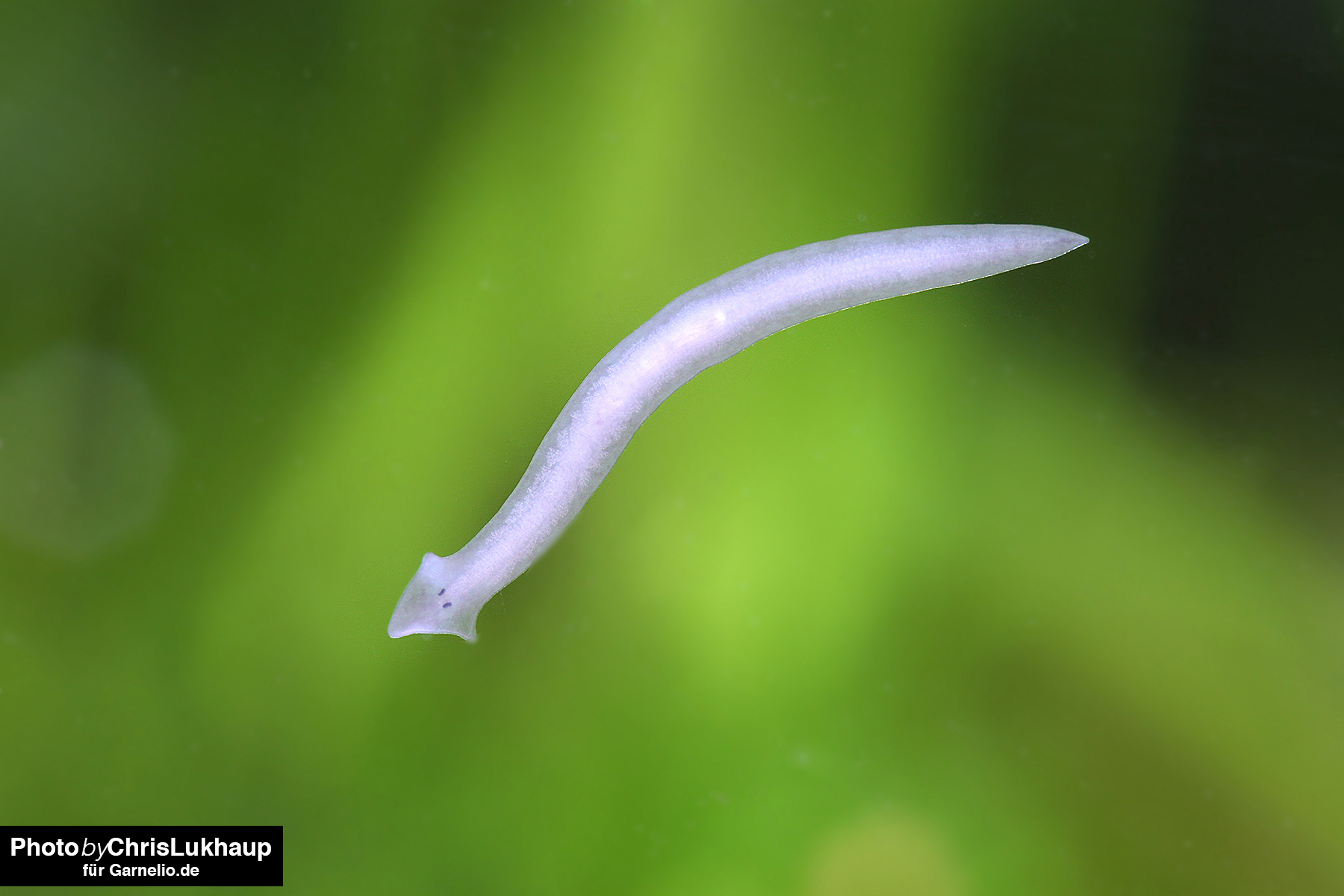
Planaria
Very often the rather harmless disc worms described above are confused with the predatory planarians from the class Seriata. However, planarians can be identified very clearly - so please look carefully first and only start with the control when the diagnosis has been made!
Planaria are rather critical in the aquarium, because they can actually attack shrimps - preferably weakened or freshly skinned animals. Snails are also among their favorite foods, along with worms and other small animals.
Planarians are not eaten by most fish and invertebrates because they taste very bitter.
Planarians can be recognized by the following characteristics, they have:
- a strongly flattened body
- two clearly visible eye spots
- a bright throat spot in the middle of their body
- the stalked intestine - it has one branch towards the front and two towards the back. Especially if the planarian has eaten something colored, the shape of the intestine can be easily seen.
Many planarians have a triangular offset head, but not all look like this. Planarians glide along on a layer of slime much like slugs. They cannot swim.
We already have a very detailed article on planaria in the Garnelio blog, where you can find all further info also on how to fight planaria in the aquarium: "Planaria in the aquarium".

Leeches
The leech family is very large. Often, when a leech is suspected in the aquarium, "leech" is automatically written - leeches, however, are almost never found by chance in the aquarium, these medically used leeches must be deliberately introduced into the tank! Also leeches are much rarer to find than commonly assumed - mostly the "leech" in the aquarium turns out to be a disc worm!
Besides the sucking leeches - their most prominent representative in aquaristics is the snail leech, somewhat rarer is the fish leech - we have mainly the predatory living slug leeches, which do not suck, but eat their prey - worms and other molluscs - whole.
Snail leeches, for example, do not swim, but gullet leeches can swim very well and fast. In doing so, they meander through the water in an S-shape.
The crawling locomotion is particularly obvious in leeches: They move like a peeper caterpillar - using their two suction cups at the front and back of their bodies. The leech plops down with the rear suction cup, stretches its body forward, sucks itself in with the front suction cup, and pulls the body along.
It is difficult to determine the exact species of leech. The best results are obtained by noting the number and distribution of eyes in the leech's head.
Leeches are surprisingly hard and cartilaginous to touch. They have clearly recognizable segments - no wonder, they belong to the annelids! The suction cups on the head and the rear end are conspicuous. Usually the suction cup at the back is particularly large and easily recognizable.
The most common leeches in aquariums are species introduced with aquarium plants from the tropics or from Asia, so please never release them!
- Glossiphoniidae or snail leeches: They can be recognized by their drop-shaped appearance. In color, snail leeches tend to be light to beige, with some species having a dark pattern. Snail leeches suck out snails and usually leave behind only the empty snail shells. Worms are also eaten. Snail leeches, on the other hand, do not eat shrimp or other crustaceans.
- Barbronia sp. or Asian leech: This leech is elongated and reddish in color. Asian leeches predominantly eat rather soft prey such as worms. Rarely, snails may also be eaten. Shrimp, crabs and shrimp have nothing to fear.
- Erpobdella sp. or dog leech: This native leech is rather rare in the aquarium. Its mottled skin is striking. The dog leech also tends not to eat larger shrimp or crabs, but will eat worms.
Nematodes or threadworms
Nematodes, like wenigborsters, are also thin, whitish, and most swim in a serpentine fashion. They are often mistaken for nematodes - in most cases the thin worm is not a nematode after all.
Among the nematodes we have harmless representatives, which are often used as fish food for nano fish and fish larvae, such as acetic worms or micro worms / banana worms. However, nematodes also include plant parasites and even species that parasitize on fish.
Nematodes have no segments, their body surface is completely smooth. They are usually whitish and only a few millimeters long at the most. For identification, the animals must therefore be examined under a microscope or at least under a good magnifying glass. As their name "threadworms" suggests, they are thread-thin. They swim in a serpentine manner.
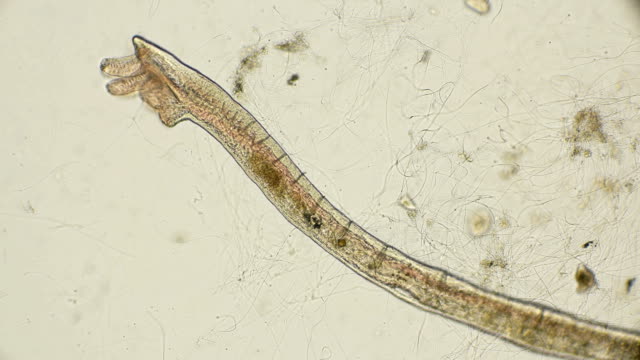
Fewborster
As a huge class of animals, the Wenigborster or Oligochaeta are very rich in species. These worms are super common in aquaristics. They are readily eaten by fish, crayfish and sometimes shrimp, as well as other worms such as leeches, planarians and other flatworms.
Fewborers feed on scraps, not live animals. Their numbers can become excessive if there is a lot of leftover food in the aquarium - similar to snails, where a lot of food also leads to strong reproduction.
Fewborsters are whitish or reddish and clearly segmented. Often the segments can only be seen under a magnifying glass or microscope because of the small size of the worms. In most cases, wenigborsters are hair-thin, that is, very long in relation to body width, and their body cross-section is more or less round. Their segments are covered with single pairs of bristles.
Many species of fewborsters can swim - usually meandering or writhing in an S-shape. Other species, however, do not like to swim. When they crawl, they move away in a jerky manner, pushing themselves along with their bristles on the substrate.
Commonly distributed species of fewborsters in the aquarium are:
- Aelosoma sp. or oil drop worms: oil drop worms are small and thin, but are actually often mistaken for planarians because of their pin-shaped round, slightly detached head. However, they are harmless scavengers, so don't worry!
- Stylaria sp. or pond snake: Not a snake, but a whitish, slightly longer fewborster, which is conspicuous by its sinuous swimming. The snout is strikingly long and narrow under the microscope.
- Lumbriculus variegatus or shiner worm: Reminiscent of an earthworm in shape, color and locomotion, to which it is also closely related. Shiny worms utilize leftovers, loosen the soil and are a great live food for fish and crayfish.
- Tubifex tubifex or Mud Tubeworm: Also a super fish food. The reddish tubifex like to live in the bottom and only let their rear end peek out. The typical wagging movements serve the oxygen intake.
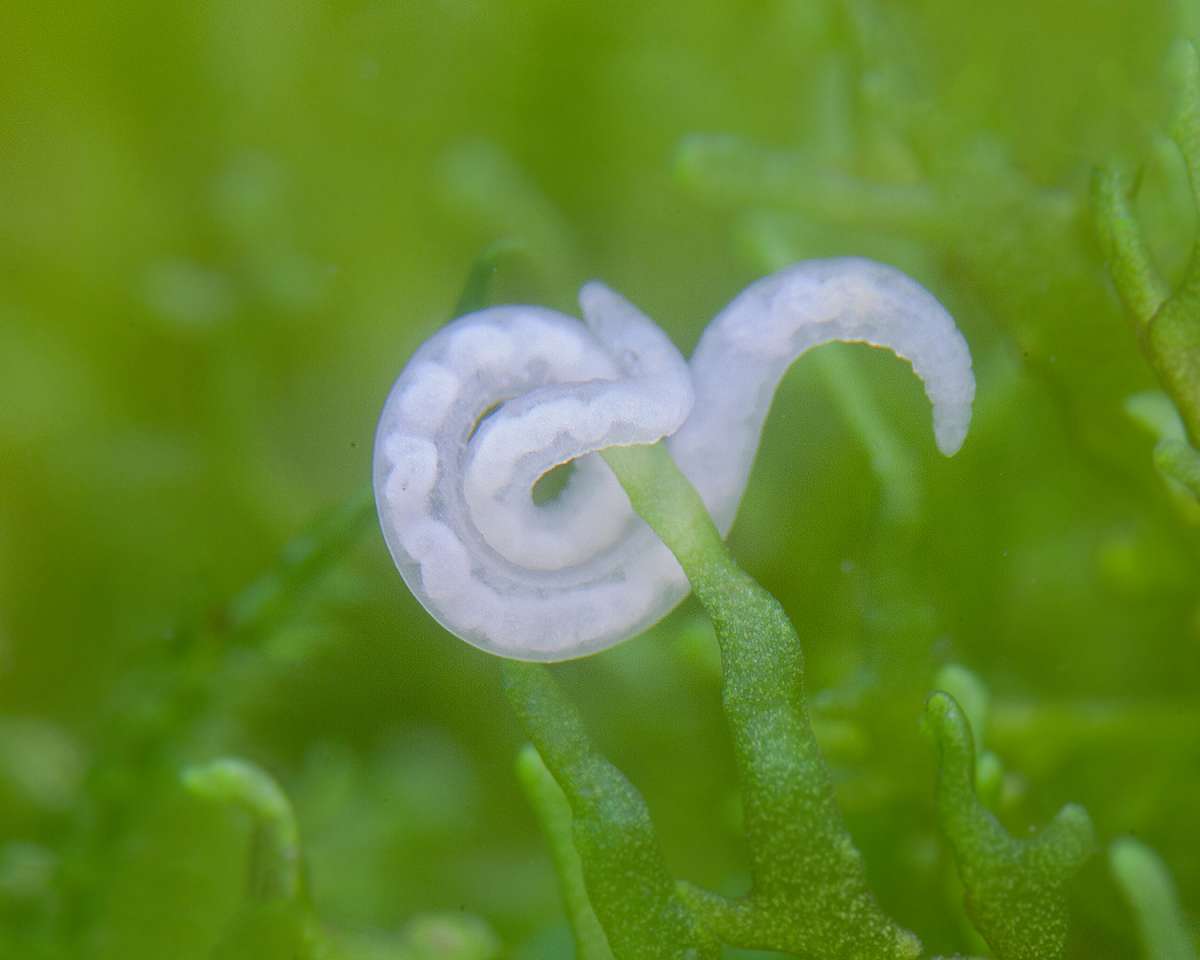
Overall, the fewborsters are a good fish food and are sometimes even eaten by shrimps. They are very useful in the aquarium because they utilize leftovers and loosen the soil so that there are no rotting spots and the plants in the aquarium always have nice fresh water around the roots.
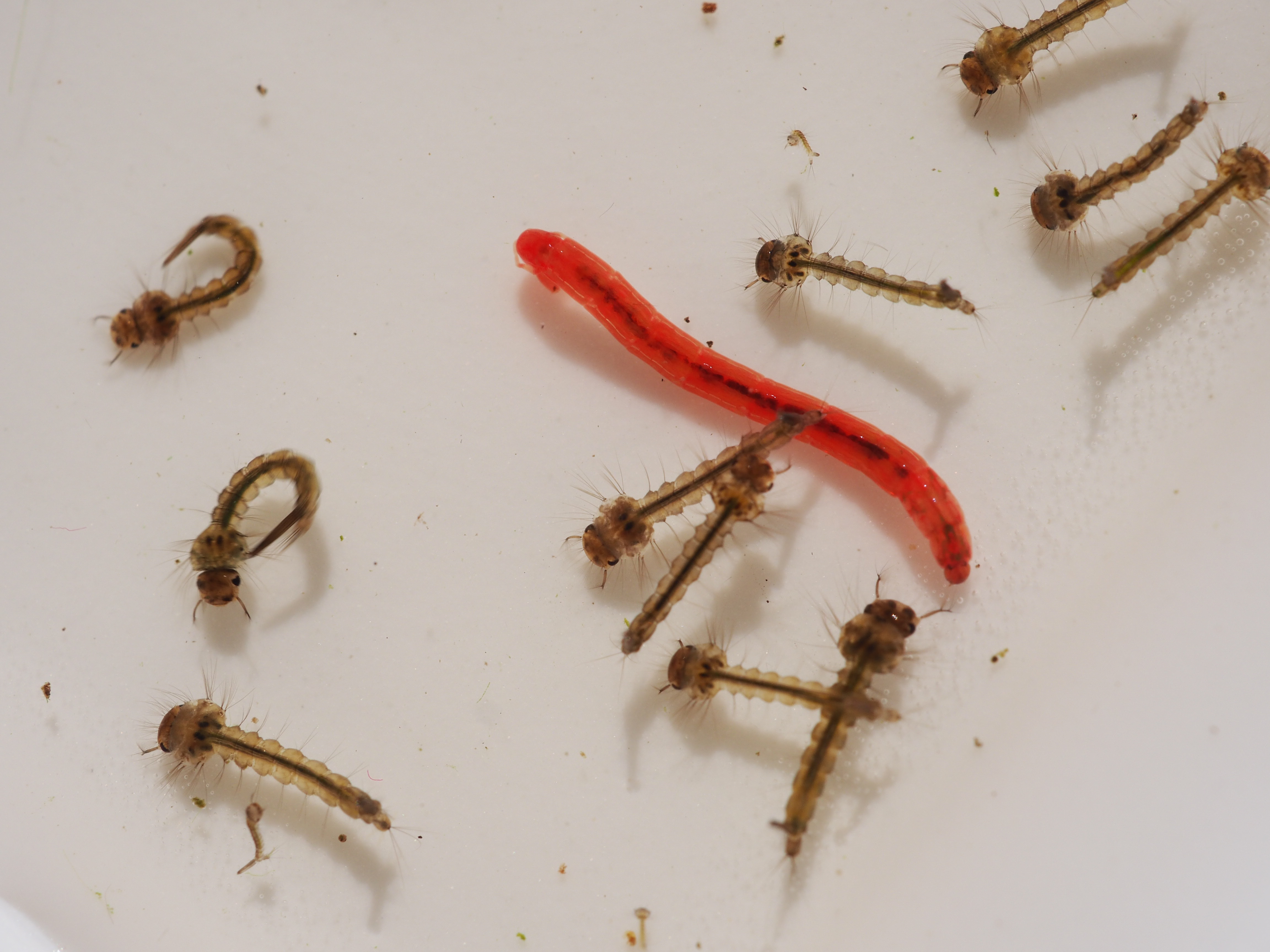
Insect larvae
There are also worm-like creatures among the insect larvae we find in the aquarium. Many of them hang below the water surface, but some insect larvae also live on the aquarium bottom. Mosquito larvae and other insect larvae are typically segmented and lack legs. However, some have body appendages such as gill tufts or breathing tubes. Depending on the species, insect larvae are brownish, beige, translucent, whitish, reddish to red, or dark brown or dark gray to black.
Some mosquito larvae are highly valued in aquaristics as fish food.
Among the most common insect larvae in the aquarium can be found:
- Black mosquito larvae: The larvae of the mosquito are known from the rain barrel. They are dark gray and hang with their breathing tube under the water surface. When threatened, they swim quickly downward in sinuous movements. Black mulas eat algae and suspended particles from the water. Super live food!
- Red mosquito larvae / sugar mosquito larvae: The larvae of the sugar mosquitoes are beige over reddish to bright red and have a darker head. Sugar midge larvae live at the bottom of the water. Some species build caddis. They cannot swim. They feed on algae and possibly microorganisms. Popular live food.
- White mosquito larvae: The glassy-transparent larvae of the tufted mosquito grow up to 1.5 cm in size and float horizontally in the water. They can swim and live predatorily on microorganisms. White mullets are a great fish food, but depending on their size, can even prey on tiny fish larvae.
- Snook larvae: This thick worm-shaped insect larva is brownish. It can be reliably identified by the appendages on its abdomen, which it can protrude in a star shape. Some see a devil's face in the patterning. Snake larvae are harmless to invertebrates and fish in the aquarium, it eats dead plant tissue and sometimes plant roots. Snake larvae are not common guests in the aquarium.
- Butterfly midge larvae: These bottom-dwelling dark insect larvae are the juvenile form of the butterfly midge, also called the abort fly. They are quite rare to find in the aquarium. They are nasty in spawning tanks because they are very voracious. Butterfly midge larvae otherwise eat amazing amounts of carrion and can even go after freshly skinned shrimp.
- Borer caterpillars: In Europe there are only a few species of borers whose caterpillars live in water, but one cannot exclude the possibility that Asian borer caterpillars are also introduced with plants. The borer caterpillar is beige green to bright green. Some species are hairy, others are smooth. Some borer caterpillars build caddis from plant debris. The borer caterpillar is rather rarely found in the aquarium. It is completely harmless to the animals, but it can nibble on aquarium plants.
